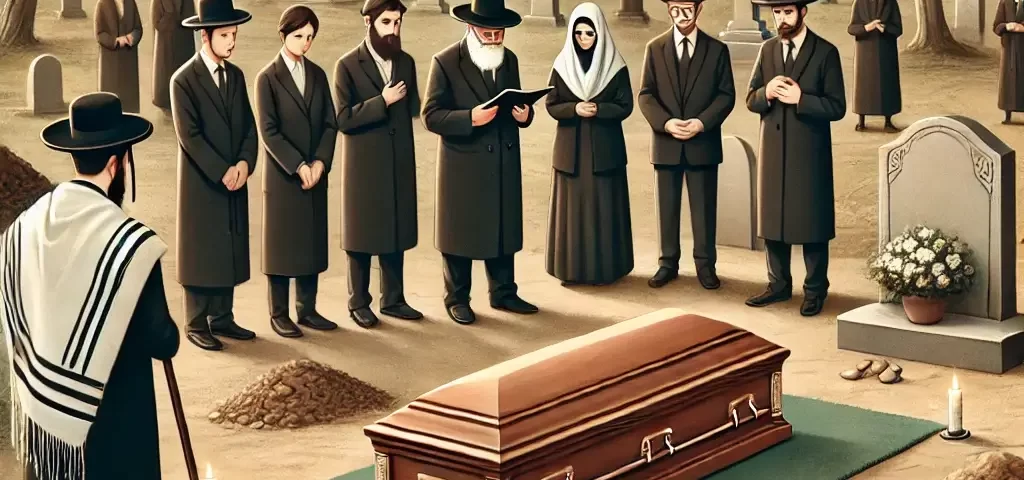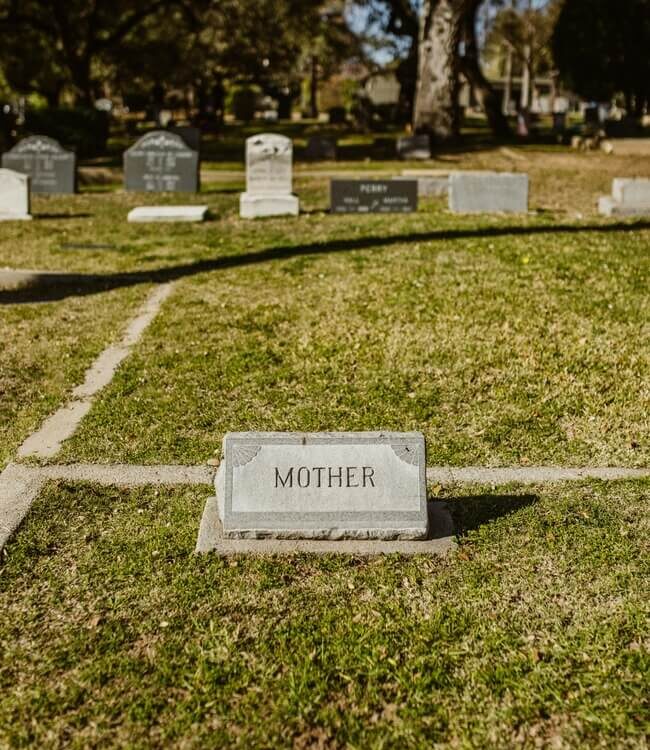Jewish Funeral Practices

Sikh Funeral Ceremonies
March 11, 2025
Muslim Funeral Traditions
March 11, 2025Jewish funeral practices are based on humility, dignity, and tradition. They attempt to honor the dead while consoled and comforting the mourners. Drawing from Jewish law (Halacha), the traditions reflect basic principles about life, death, and the afterlife. The practices esteem simplicity, equality in death, and keeping the dead with dignity.
Overview of Jewish Beliefs About Death and the Afterlife
Death in Judaism is not an end but a transformation. The beliefs regarding death vary across different Jewish denominations, but there is a common focus on the soul’s journey. The soul ascends to God, for many, but others imagine there is an afterlife of reconnecting with beloved ones or the day of judgment. Of all Jewish teachings, most significant is the idea of Olam Ha-Ba (the World to Come), a world in heaven where the soul finds peace and reward.
Death has also been viewed as a natural part of living. Funeral rites are designed to provide spiritual consolation to the dead and consolation to the bereaved. Emphasis is still placed on demonstrating respect for the memory of the deceased and sympathy to the bereaved.
Preparation and Rituals Before the Funeral
The moments following death are sacred in Jewish tradition. Preparations follow strict guidelines to preserve the deceased’s dignity and prepare the body for burial as quickly as possible.
Ritual Washing (Tahara) and Purification
Tahara, or ritual cleansing, is symbolic of spiritual cleansing and is performed by a Chevra Kadisha (Jewish burial society) team. The team gently cleanses the body and says prayers asking forgiveness and protection for the soul of the deceased. The ritual symbolizes the belief that the soul is now free of worldly concerns.
The body is constantly perfused with water in an effort to completely cleanse it. After washing, it is dried and wrapped in plain white shrouds representing purity and leveling of all individuals even when deceased.
Shrouding the Deceased (Tachrichim)
The deceased is attired in Tachrichim, plain linen white burial clothes. The garments are free from ornaments to mean humility and the fact that in death, everybody is equal whether they were wealthy or poor or high or low in rank. Men are wrapped in a tallit (prayer shroud) with one of its tassels clipped, meaning that their earthly religious obligations have been ended.
After being wrapped, the body is placed in a simple wooden casket, which has no metal or nails. This practice expresses that man begins from earth and will return to earth, endorsing the return of the body into its natural form in earth.
The Jewish Funeral Service
Jewish funeral ritual assumes a simple but symbolic form, with each element serving to recall the deceased and console those in mourning. A ceremony is most often held within a synagogue, mortuary, or on a gravesite, as directed by the family and traditional society. The rabbi or religious leader will generally perform the ritual, with individuals from the immediate family of the deceased assuming a prominent role.
The service begins with the recitation of Psalms, which provide religious support as well as introspection. The sacred lines identify common themes in life, religion, and memories. Relatives or friends can deliver eulogies after reciting the Psalms. Unlike more general praise, Jewish eulogies (hespedim) emphasize virtues, acts of kindness, and interaction with family and society.
Among prayers most crucial in recitation is El Maleh Rachamim (God, Full of Compassion). El Maleh Rachamim requests the quiet repose of the soul and comprehension of the state of life and death. El Maleh Rachamim’s recitation serves as the profound utterance of desire for God’s mercy for the dead individual’s soul.

Jewish Burial Traditions
Jewish funeral rites are based on simplicity and reverence for the dead. Embalming is generally eschewed in order to maintain the natural state of the body, as this is a reflection of the Jewish desire to return to the earth as quickly as possible. Burial within 24 hours is generally desired, although accommodations can be made for practical considerations or the Sabbath.
The use of wooden coffins is a unique aspect of Jewish funerals. The coffins, which are normally coated with untreated pine, symbolize equality in death as they make everyone die in dignity regardless of their social status. The plainness also signifies humility and the transient nature of life. In other communities, nails are avoided so that the body can stay fully intact for burial according to Jewish scripture regarding the natural order of death and life.
Mourning Practices and Sitting Shiva
Jewish bereavement has its roots deeply planted in comforting survivors as well as remembering the dead. At its core are all its practices shiva, sitting shiva with the immediate family and close kin for seven days, which normally occurs immediately following burial and will extend a week but which takes on some variation based on family tradition or holiday.
When in shiva, the mourners stay indoors and open their homes to visitors who visit to condole with them. The main purpose is to have a place where one can be seated comfortably, think about the dead person, and weep. The mourners usually sit on stools or the floor in a demonstration of humility and grief. They may not shave, put on leather shoes, or engage in celebratory actions, pouring all their energy into mourning.
Guests are requested to come in quietly and allow the mourners to be heard before them. The strength of silence is that in a few instances, simply sitting with the mourners will be enough to offer comfort. Speaking will be more about the life of the deceased and their positive traits than offering platitudes or a try at “fixing” their grief.
Shiva Candles, Mirrors, and Meals
There are some symbolic rituals followed during shiva to create a mourning atmosphere. A shiva candle is lit as soon as one returns from the funeral and is kept burning throughout the entire seven days, representing the presence of the soul forever.
Domestic mirrors are often veiled to discourage vanity and draw attention to religious reflection rather than external appearance. For some, the practice serves as a reminder that life is transitory, but for others, it is a way of removing distractions from praying and mourning.
Food is a fundamental aspect of shiva customs, with visitors often bringing food to assist in maintaining the family. The initial meal following interment is referred to as the Seudat Havra’ah (Meal of Condolence) and includes traditionally hard-boiled eggs, lentils, or round bread—foods symbolizing the circle of life. Throughout shiva, mourners are not advised to cook or prepare meals in order to fully commit to mourning, and thus community assistance through meals becomes essential.
Condolence Etiquette During Shiva
Visiting a shiva home is an act of compassion, but it’s important to observe proper etiquette. Enter quietly and wait for the mourner to initiate conversation. Avoid offering statements that attempt to rationalize loss, like “they’re in a better place,” or focusing on how the mourner should “move on.” Instead, share memories or simply express condolences with phrases like “I’m so sorry for your loss” or “May their memory be a blessing.”
If you are bringing food, choose traditional foods or something that can be reheated or served easily. Make sure any food follows kosher dietary guidelines if the family keeps them. Most importantly, be sensitive to the family’s traditions and preferences to provide significant support during this holy time of bereavement.


